Exotic fruit for the Pacific NW
beluga01
14 years ago
Featured Answer
Sort by:Oldest
Comments (48)
boizeau
14 years agolast modified: 9 years agobeluga01
14 years agolast modified: 9 years agoRelated Discussions
Pacific NW mixed shrub border
Comments (8)Alyga: This weekend is a free plant swap worth the drive northeast to Redmond, WA as we've brought home more than imagined. Amazing that it's all free & lovely plants of all types from trees to dahlia tubers. Perennial vegetables & fruits of all types as well if that's your interest also. The parking lot gets filled to the max, so be sure to arrive by 10am if you can. If you have a wish list that is also helpful as someone will likely direct you to it elsewhere in the parking lot! People trade from the backs of their cars as well as drop off plants in a free area near the church entrance. Jim has a crew set up & serve hot coffee/tea as well. We've been in pouring down rain as well as sunshine & still gardeners everywhere with pots and plants. Enjoy, Corrine From the Pacific Northwest Garden Exchange Forum Posted by greenelephant Woodinville WA (My Page) on Fri, Sep 24, 10 at 14:20 You are invited to share in your "Autumnal Abundance" Saturday November 6, 2010, 10:00 AM to Noon Church of the Holy Cross 11526 162nd Ave NE Redmond, WA 98052 Jim Eichner host 425-223-7249 cell anytime. November is an excellent time to divide and conquer your garden: move woody plants, empty containers, divide perennials, gather seeds and store frost-tender tropicals. While we are at it, it is time to exchange and share plants and talk about the highlights of our summer gardens. Here is a link that might be useful: Green Elephant Plant Swap Details & Directions...See MorePacific N.W and figs
Comments (7)I live in Vancouver WA. Although I am a fairly new fig grower (6 years), I have several varieties. The smallest variety so far is Petite negri (several spellings exist). They have this tree at Raintree Nurseries (in Washington state) and some other sources. I bought mine via mail order from Wayside Gardens but the one that they sent me was only about 6 inches tall. Still, it grew. It is productive of good tasting figs, they are fairly small, black, red inside. The tree seems to stay small, mine is about 6 feet tall now. The link below is a photo of these figs, except for one which is brown and came from a Brown Turkey. Others can be trained in bush form, and kept to small size as well. The best tasting that I have had is not one that I grew, but the figs were given to me. Those were from Desert King. That tree would grow a lot bigger, but might stay small with good pruning practices. I just got one this year, so I don't know how it will do yet. Good luck with your figs. Here is a link that might be useful:...See MoreGood Bee Forage for Pacific NW
Comments (23)A friend of mine who created a deer "hedgerow" to try and keep them in the ravine rather in her garden, considered mock orange one of those the deer would browse but not kill, and that once it was established at least, was able to withstand their affections for it. Perhaps create a cage for it from chicken wire or something, so that at least initially, it has space to grow, and the deer can only nip the outlyers? For what its worth, it tends to like similar conditions to your Ceanothus- sunny edge to open areas, preferably on the dry side once established. Happy with summer irrigation, but once going strong shouldn't need it. In shade the plant will grow well, but not necessarily flower too well. On cascara as a moist forest species, I beg to differ. It is one of several trees folks taking care of the Mima Mounds, Glacial Heritage and similar prairies in the south sound area are weeding off the mounds and out of the meadows. It can and will take dry conditions very well. However, it does tend to change how it looks in dryer soils- smaller leaves, more compact habit. Osoberry will do the same, though it is much more dependent on moist spring soil than the cascara. Cascara does NOT like wet feet either. It will do ok along the edges of marshy areas, but rarely seeds itself into saturated soils. Of course, in the garden it will typically get more moisture than it tends to in the woods anyway. As far as Anna's not being native, well neither is the honey bee, lol. At least the Anna's is an American Native. Honeybees are old world bugs, however treasured by many. Both enjoy a winter nectar source....See MoreIs it too early to plant in the Pacific NW?
Comments (13)Sherm- I live near Portland and started planting out in early April, but under TunLCovers, which are 18' long, 18" tall double-walled plastic with wire ribs that push into the soil. I have been using them for more than 6 years, still have my first ones, and have used them to get the tomatoes through frosts and snow. I also put them out a few weeks early to dry the soil before planting, so it doesn't matter that it rains frequently. I posted a photo on the thread below which Photobucket failed to rotate, of my first transplants. I had to replace 3 of them. I plan to put my peppers and eggplants that will be in pots outside this week. I harden plants off on my concrete east-facing porch and so I've had tomato plants out there hardening off since early April, though I tried to cover them when temps get into the low 30's. Here is a link that might be useful: photo...See Morerain2fall
14 years agolast modified: 9 years agolarry_gene
14 years agolast modified: 9 years agoEmbothrium
14 years agolast modified: 9 years agobeluga01
14 years agolast modified: 9 years agoEmbothrium
14 years agolast modified: 9 years agolarry_gene
14 years agolast modified: 9 years agoEmbothrium
14 years agolast modified: 9 years agoboizeau
14 years agolast modified: 9 years agoEmbothrium
14 years agolast modified: 9 years agomuddydogs
14 years agolast modified: 9 years agolarry_gene
14 years agolast modified: 9 years agoEmbothrium
14 years agolast modified: 9 years agoblameitontherain
14 years agolast modified: 9 years agolarry_gene
14 years agolast modified: 9 years agoblameitontherain
14 years agolast modified: 9 years agohemnancy
14 years agolast modified: 9 years agohemnancy
14 years agolast modified: 9 years agoEmbothrium
14 years agolast modified: 9 years agohemnancy
14 years agolast modified: 9 years agoEmbothrium
14 years agolast modified: 9 years agobeluga01
14 years agolast modified: 9 years agohemnancy
14 years agolast modified: 9 years agoGeorge Three LLC
14 years agolast modified: 9 years agobriergardener_gw
14 years agolast modified: 9 years agobriergardener_gw
14 years agolast modified: 9 years agorain2fall
14 years agolast modified: 9 years agobriergardener_gw
14 years agolast modified: 9 years agolarry_gene
14 years agolast modified: 9 years agobriergardener_gw
14 years agolast modified: 9 years agobeluga01
14 years agolast modified: 9 years agohemnancy
14 years agolast modified: 9 years agobriergardener_gw
14 years agolast modified: 9 years agohemnancy
14 years agolast modified: 9 years agomkirkwag
7 years agoEmbothrium
7 years agolast modified: 7 years agoKris L
6 years agoParker Turtle
6 years agolast modified: 6 years agoartinnature
6 years agolast modified: 6 years agoTiffu (Oregon 8b)
6 years agoThe Logician LLC
6 years agolast modified: 6 years agoTiffu (Oregon 8b)
6 years agoThe Logician LLC
6 years agolast modified: 6 years agoophoenix
6 years agoThe Logician LLC
6 years agoophoenix
6 years ago
Related Stories

GARDENING GUIDESTop 10 Native Plants for the Pacific Northwest
More than just gorgeous and adaptable, these standout plants convey a sense of place
Full Story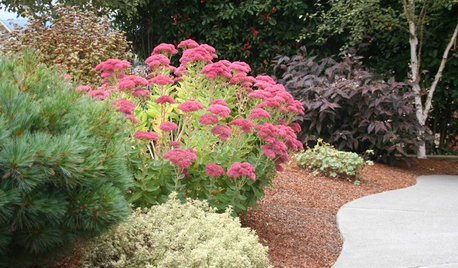
GARDENING GUIDESPacific Northwest Gardener's August Checklist
Deadheading perennials, cutting raspberry canes and preparing for the onion harvest keeps Northwest gardeners busy in August
Full Story
GARDENING GUIDESGarden-Friendly Native Alternatives to Overplanted Exotics
There are lots of gorgeous, wildlife-friendly native plants ready to make an appearance in your garden
Full Story
HOUZZ TOURSMy Houzz: European Touches in the Pacific Northwest
This century-old traditional home takes design inspiration from France and England, with plenty of antiques and artful details
Full Story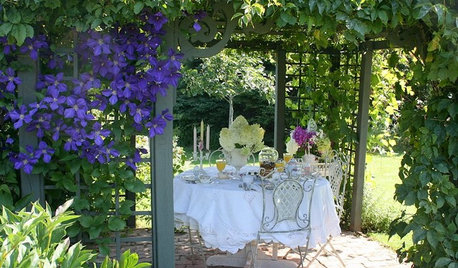
GARDENING GUIDESPacific Northwest Gardener: What to Do in May
Take advantage of May's warmth to prune spring blooms and plant vegetables and annuals for a summer bounty
Full Story
DECORATING GUIDES10 Ways to Give Your Hospitality a Tropical Touch
Treat guests to the resort treatment with blossoms, fruit and artwork that stir up an air of the exotic
Full Story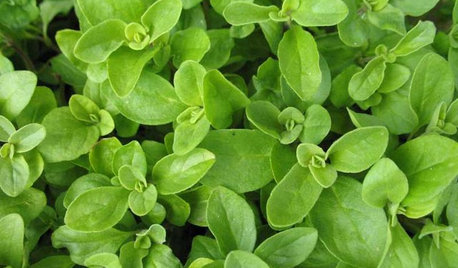
EDIBLE GARDENSHerb Garden Essentials: Grow Your Own Oregano and Marjoram
Say 'buon giorno' to classic Italian herbs you can grow just as easily in pots as in the summer garden
Full Story
HOUSEPLANTSOne Pot, One Big Shot of the Tropics
Give your rooms exotic flair in a single stroke. Tall Kentia palm fits the tropical bill beautifully
Full Story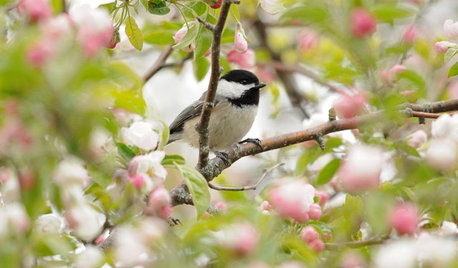
SPRING GARDENINGSpring Gardens Are Waking — Here’s What to Do in March
Excitement fills the air when gardens come back to life. These guides will help you make the most of yours
Full Story
GARDENING AND LANDSCAPINGLay of the Landscape: Tropical Garden Style
Create a vacation paradise in your backyard even if temperatures sometimes dip with these guidelines for tropical-style gardens
Full Story



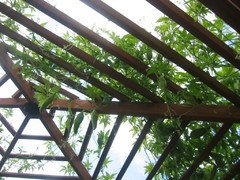


hemnancy